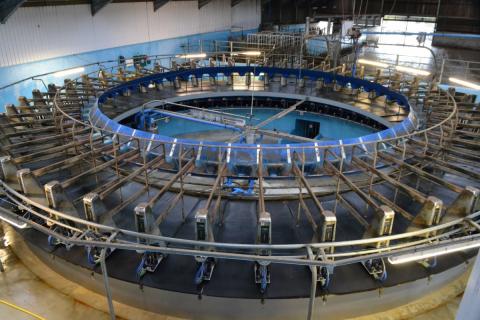The milking parlour is one of the most used pieces of equipment on a dairy farm, but it can be overlooked when it comes to maintenance.
Poorly serviced, maintained and operated milking equipment can lead to inefficient or incomplete milking, poor milk quality, teat trauma and mastitis infections. However, when looked after properly, it can improve milking efficiency, milk quality and yield and herd health.
Ian Ohnstad, of specialist dairy consultancy The Dairy Group, says: “The milking machine is like any other machine on the farm. A failure to employ a planned service schedule will lead to un-planned breakdowns and can cause damage to sensitive teat tissue.”
As herd sizes have increased and parlours operate for longer, an annual service by a dairy engineer may no longer be enough.
“The frequency of servicing a tractor or combine harvester is generally dictated by the running hours on the clock,” adds Mr Ohnstad. “The more hours the machine operates, the shorter the interval between services. The same principal should apply to a milking parlour.”
A milking parlour will usually need an interim service after 750 operating hours and a more significant service after 1500 hours. A 250-cow herd milking for seven hours a day will require a major service every 215 days. This service should include a static test monitoring the system vacuum level, pulsation operation, effective vacuum reserve, vacuum leakage and vacuum pump output. The service will probably include service kits for pulsators costing £25-£35, milk meters, and milk and vacuum pumps.
Between services, farm staff should carry out some basic routine maintenance. It is essential to regularly monitor the vacuum level with an accurate farm vacuum gauge to achieve efficient, complete yet gentle milking.
“As a rule of thumb, parlours with low level milk lines should have a system vacuum between 40 – 44.0 KiloPascals while midi level plants should be closer to 44 – 48.0 KPa.”
Effective pulsation, which allows the liner to fully open and close during a cycle, relieves the effects of vacuum on the cow’s teat. Incomplete or un-even milking is often a result of a pulsation failure.
“This can be a failure of the complete pulsator which will affect the whole cluster, or one channel which will lead to incomplete milking or particular quarters,” says Mr Ohnstad.
Milking liners also need changing regularly. Liners age as they open and close and from coming into regular contact with milk fat and stringent cleaning products.
“Aged liners will milk more slowly, be more prone to slippage and tend to leave higher levels of residual milk in the udder.”
Rubber liners should be changed after milking 2,500 cows and cost between £16 and £30 for four, while silicone liners can milk nearer 8,000 cows before being changed, at a cost of around £50. To calculate how often to change liners, divide the total number of cows milked each day (taking milking frequency into account) by the number of milking points. This is the number of cows milked by each milking point daily. Divide this number by 2,500 milkings or 8,000 depending on liner type to calculate the frequency of liner changes.
Establishing a regular maintenance routine will help ensure milking systems operate efficiently, maximise milk yield and optimise herd health.
More information on parlour hygiene and mastitis can be found on our Mastitis Bugs - Cause and Control factsheet

